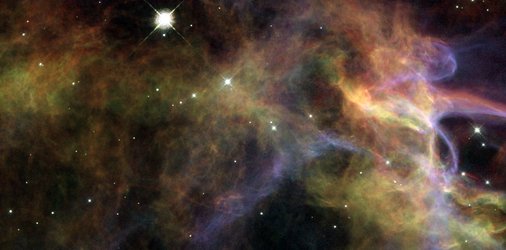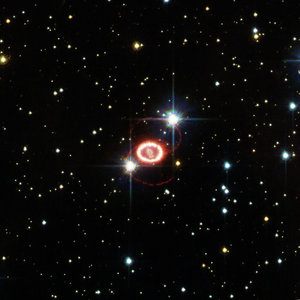Accept all cookies Accept only essential cookies See our Cookie Notice

About ESA
The European Space Agency (ESA) is Europe’s gateway to space. Its mission is to shape the development of Europe’s space capability and ensure that investment in space continues to deliver benefits to the citizens of Europe and the world.
Highlights
ESA - United space in Europe
This is ESA ESA facts Member States & Cooperating States Funding Director General Top management For Member State Delegations European vision European Space Policy ESA & EU Space Councils Responsibility & Sustainability Annual Report Calendar of meetings Corporate newsEstablishments & sites
ESA Headquarters ESA ESTEC ESA ESOC ESA ESRIN ESA EAC ESA ESAC Europe's Spaceport ESA ESEC ESA ECSAT Brussels Office Washington OfficeWorking with ESA
Business with ESA ESA Commercialisation Gateway Law at ESA Careers Cyber resilience at ESA IT at ESA Newsroom Partnerships Merchandising Licence Education Open Space Innovation Platform Integrity and Reporting Administrative Tribunal Health and SafetyMore about ESA
History ESA Historical Archives Exhibitions Publications Art & Culture ESA Merchandise Kids Diversity ESA Brand Centre ESA ChampionsLatest
Space in Member States
Find out more about space activities in our 23 Member States, and understand how ESA works together with their national agencies, institutions and organisations.
Science & Exploration
Exploring our Solar System and unlocking the secrets of the Universe
Go to topicAstronauts
Missions
Juice Euclid Webb Solar Orbiter BepiColombo Gaia ExoMars Cheops Exoplanet missions More missionsActivities
International Space Station Orion service module Gateway Concordia Caves & Pangaea BenefitsLatest
Space Safety
Protecting life and infrastructure on Earth and in orbit
Go to topicAsteroids
Asteroids and Planetary Defence Asteroid danger explained Flyeye telescope: asteroid detection Hera mission: asteroid deflection Near-Earth Object Coordination CentreSpace junk
About space debris Space debris by the numbers Space Environment Report In space refuelling, refurbishing and removingSafety from space
Clean Space ecodesign Zero Debris Technologies Space for Earth Supporting Sustainable DevelopmentApplications
Using space to benefit citizens and meet future challenges on Earth
Go to topicObserving the Earth
Observing the Earth Future EO Copernicus Meteorology Space for our climate Satellite missionsCommercialisation
ESA Commercialisation Gateway Open Space Innovation Platform Business Incubation ESA Space SolutionsEnabling & Support
Making space accessible and developing the technologies for the future
Go to topicBuilding missions
Space Engineering and Technology Test centre Laboratories Concurrent Design Facility Preparing for the future Shaping the Future Discovery and Preparation Advanced Concepts TeamSpace transportation
Space Transportation Ariane Vega Space Rider Future space transportation Boost! Europe's Spaceport Launches from Europe's Spaceport from 2012Latest

The twisted shockwaves of an exploded star
Thank you for liking
You have already liked this page, you can only like it once!
Discovered on 5 September 1784 by astronomer William Herschel, the Veil Nebula was once a star. Now it is a twisted mass of shock waves that appears six times larger than the full Moon in the sky.
This Hubble Space Telescope image shows just a small part of the nebula, a region known as the ‘south-eastern knot’. The entire nebula is about 50 light years in radius, and is located almost 1500 light years away.
Ten thousand years ago, the Veil Nebula did not exist. Back then, it was a star, much brighter and larger than our own Sun, burning furiously thanks to the nuclear furnace in its centre. As those reactions faltered when its fuel was exhausted, the star collapsed and exploded.
This is estimated to have happened some 5000–10 000 years ago. Sky watchers would have seen the star brighten enormously over the course of a day or two. It would have become brighter than a crescent moon.
Such a titanically destructive event is called a supernova. Modern measurements show that a supernova can outshine the combined light of 100 billion normal stars. Over the course of a week or so, our ancestors would have watched the fireball fade back into obscurity, only to be rediscovered millennia later by William Herschel as an expanding ball of gases in space.
During the star’s final detonation, it flung its outer layers into space at more than 600 000 km/h. What we see now is these layers colliding with the surrounding gases of interstellar space.
The energy imparted in the collision heated the gas to millions of degrees, causing it to emit light. The wavelength of this light depends upon the atoms present in the excited gas. In this image, blue shows oxygen, green shows sulphur, and red shows hydrogen.
Supernova explosions are important because they seed the Universe with heavy chemicals, building all the elements heavier than iron. They are rare in our galaxy, with only one or two stars exploding over the course of a century.
The Hubble Space Telescope is a project of international cooperation between ESA and NASA. This image was taken with the Wide Field and Planetary Camera 2, and was first published in July 2007.
-
CREDIT
NASA/ESA/Hubble Heritage (STScI/AURA) - ESA/Hubble Collaboration. Acknowledgment: J. Hester (Arizona State Univ.) -
LICENCE
ESA Standard Licence

Return to the Veil Nebula

Lifting the veil

The Witch's Broom Nebula within the Veil Nebula

Close-up of the Veil Nebula showing its wispy structure















 Germany
Germany
 Austria
Austria
 Belgium
Belgium
 Denmark
Denmark
 Spain
Spain
 Estonia
Estonia
 Finland
Finland
 France
France
 Greece
Greece
 Hungary
Hungary
 Ireland
Ireland
 Italy
Italy
 Luxembourg
Luxembourg
 Norway
Norway
 The Netherlands
The Netherlands
 Poland
Poland
 Portugal
Portugal
 Czechia
Czechia
 Romania
Romania
 United Kingdom
United Kingdom
 Slovenia
Slovenia
 Sweden
Sweden
 Switzerland
Switzerland
























